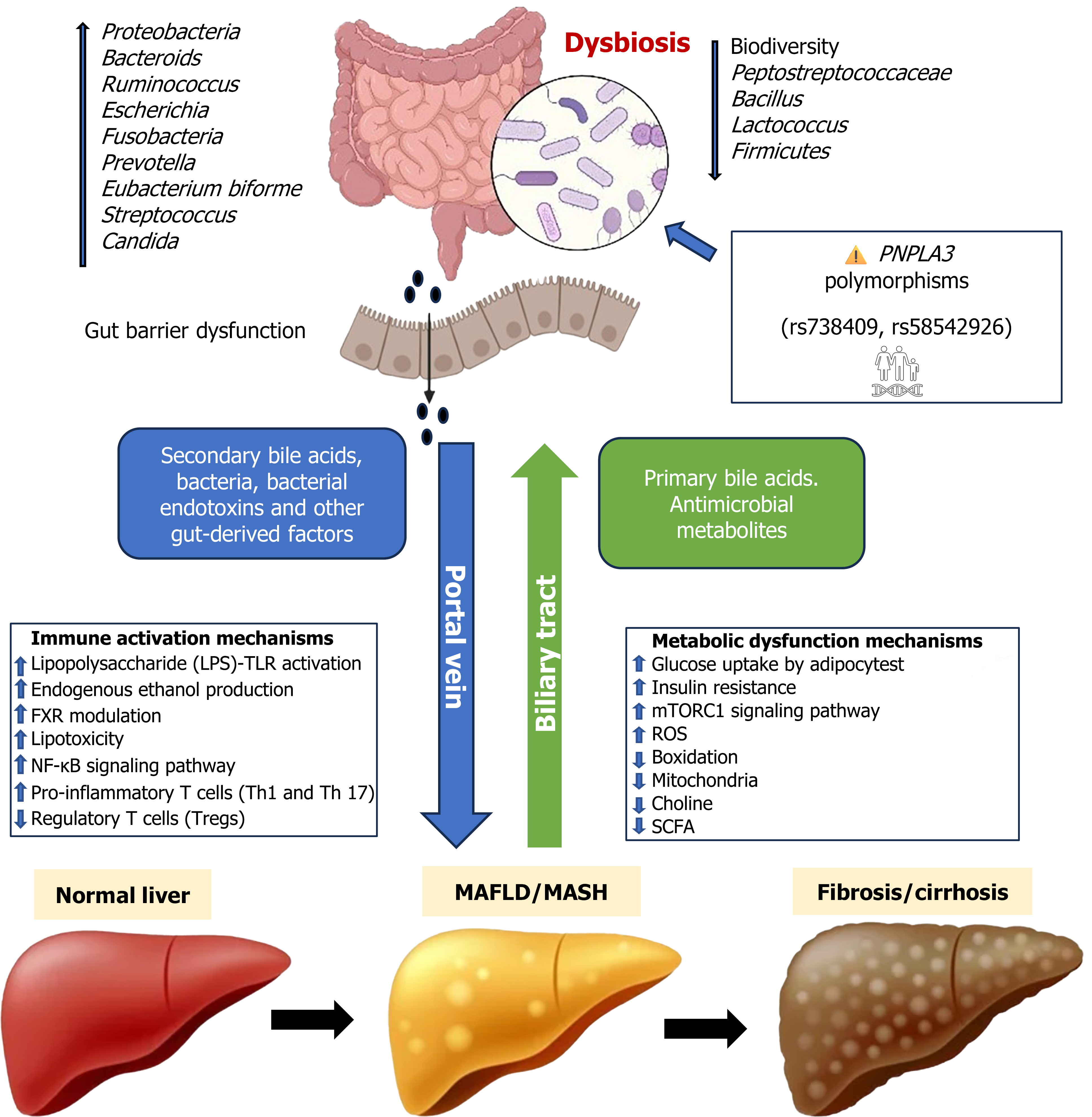Copyright
©The Author(s) 2025.
World J Hepatol. Aug 27, 2025; 17(8): 108730
Published online Aug 27, 2025. doi: 10.4254/wjh.v17.i8.108730
Published online Aug 27, 2025. doi: 10.4254/wjh.v17.i8.108730
Figure 1 Pathophysiological interactions between gut dysbiosis and metabolic dysfunction-associated fatty liver disease: A gut-liver axis model.
This diagram illustrates the complex interplay between gut dysbiosis and the pathogenesis of metabolic dysfunction-associated fatty liver disease. Disruption of gut microbiota and gut barrier integrity leads to increased translocation of bacterial endotoxins, secondary bile acids, and microbial metabolites via the portal vein. These gut-derived factors activate hepatic immune and metabolic pathways, including Toll-like receptor signaling, farnesoid X receptor modulation, mitochondrial dysfunction, and insulin resistance, contributing to the progression from hepatic steatosis to steatohepatitis and eventually fibrosis or cirrhosis. Host genetic susceptibility (e.g., PNPLA3 variants) further modulates disease progression. LPS: Lipopolysaccharide; TLR: Toll-like receptor; FXR: Farnesoid X receptor; NF-κB: Nuclear factor kappa B; Th1: T helper type 1; Th17: T helper type 17; Treg: Regulatory T cells; mTORC1: Mammalian target of rapamycin complex 1; ROS: Reactive oxygen species; SCFA: Short-chain fatty acids; MAFLD: Metabolic-associated fatty liver disease; MASH: Metabolic-associated steatohepatitis.
- Citation: Al-Busafi SA, Alwassief A, Madian A, Atalla H, Alboraie M, Elbahrawy A, Eslam M. Exploring the interplay between metabolic dysfunction-associated fatty liver disease and gut dysbiosis: Pathophysiology, clinical implications, and emerging therapies. World J Hepatol 2025; 17(8): 108730
- URL: https://www.wjgnet.com/1948-5182/full/v17/i8/108730.htm
- DOI: https://dx.doi.org/10.4254/wjh.v17.i8.108730









